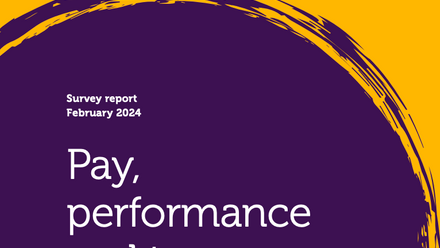What we learned from Gender Pay Gap reporting

A rush to the finish line
Just over 10,500 companies reported by 4 April, with 1,500 reporting in the final 24 hours and 1,557 missing the deadline. The Equality and Human Rights Commission (EHRC), who are tasked with enforcing the Gender Pay Gap Regulations, issued letters to all non-compliant employers on 9 April. Most have now reported or confirmed they are not caught by the Regulations, and it is thought unlikely many employers will actually reach the breach of court order stage of sanctions and resulting fines. In theory all positive news but there is still much work to be done in terms of the quality of reporting.
One concern in the rush to submit is the accuracy of reporting. Of the companies submitting, 216 have resubmitted or corrected their figures more than once and 61 have reported the statistically implausible values of a zero per cent mean and median hourly pay gap. A quick analysis of the figures available for download from the government’s Gender Pay Gap Service also shows some other dubious calculations. The EHRC have indicated that enforcement on improbable data is likely to be their next course of action.
Gender Pay Gap narratives
Reporting the six headline metrics is only the starting point for any organisation looking at tackling Gender Pay Gaps and pay discrimination. The expectation is that once employers had calculated their metrics they would then take the time to analyse them, understand the contributing causes and set out action plans. Whilst many employers did include narratives to accompany their figures, these were of varied quality and over 25 per cent of those reporting failed to include any form of narrative. This really is a missed opportunity to explain the context of the numbers and what they plan to do about them.
Looking at narrative content, “we pay equally but have more men at senior levels than women” was the most cited explanation for the gap, often with no further justification about what they intended to do about it. Almost as if saying that is ‘just the way it is’ and effectively closing the door on opportunities to improve diversity.
Another frequent comment was, “our pay gap is not a sign of discrimination because it shows differences in average pay” but a pay gap is always a flag for discrimination and employers need to investigate what is causing the gap, pay or non-pay related.
A further commonly proffered statement was, “we are confident that our Gender Pay Gap is not a pay issue”. I think it highly unlikely any employer can genuinely say there is no discrimination in their pay systems, and an audit of all pay practices is recommended to identify any indiscrete forms of discrimination that may be lurking. The EHRC have indicated that narratives will become an area of focus this year as a way of encouraging employers and others to tackle the causes of the gender pay gap.
2018 reporting tips
The first recommendation is to do the reporting early internally. This allows time to analyse the outcomes and form that all important narrative and action plan. Many clients working on the CuroGPG platform will be doing their reporting during June and July. One area they will be seeking to address is how to ensure consistency in reporting. This will be a challenge for some employers who hired in temporary resource last year. You need to use the same methodology so that year over year comparisons are accurate. If looking back at last year’s figures you find mistakes, be honest about these and address them in this year’s explanations. It is also worth considering reporting on the same incumbent data sets to account for the impact of corporate restructuring or significant organisational changes and include this detail in your narrative reports.
As two years of results will now be visible to stakeholders showing your progress and the story of your journey is going to be critical. Unfortunately those employers who reported late are unlikely to have had time to implement actions to address any gaps as the snapshot date has already passed for the 2018/19 period. But 2018 is the time to get honest about your numbers and show your commitment to improvement. Some may expect the numbers to get worse before they get better but again demonstrating an understanding of why will be helpful.
Now that some of the fear of how to report and the impact of publically declaring have subsided, this year businesses need to be authentic and come clean on the reasons for their gender pay gap so they can address the root causes and start the journey to greater pay equity and transparency.
Author is Ruth Thomas, Senior Consultant at Curo Compensation.
This article was provided by Curo Compensation.
In partnership with Curo
Our market leading software allows you to optimise your compensation spend.







